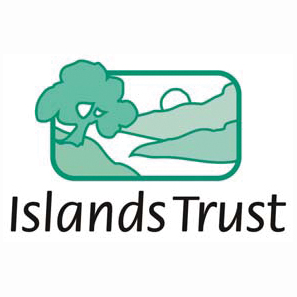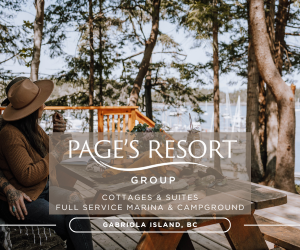Derek Kilbourn
Sounder News
The Gabriola Local Trust Committee is adding the Ecological Protection Zone project to the list of items to be covered during an Official Community Plan review engagement with Snuneymuxw First Nation (SFN). This decision came during the regular meeting of the Gabriola LTC on September 5, 2024.
In March of 2023, the LTC gave first reading to Bylaw No. 313, to develop a new Ecological Protection Zone that would apply to Elder Cedar (S’ul-hween X’pey) Nature Reserve. The proposed bylaw was referred to Snuneymuxw First Nation (SFN), Regional District of Nanaimo (RDN), and Islands Trust Conservancy (ITC).
Both the ITC and the RDN have responded to the referrals, recommending there be a review of the definition of ‘passive recreation’ incorporated into the proposed bylaw.
As of yet, Snuneymuxw has not responded, but SFN staff have said they will provide a response. Trust staff say they are uncertain when this response will be received.
At the Sept. 5 meeting, Trust staff were recommending that the SFN engagement on the proposed Ecological Protection zoning be incorporated into the First Nations engagement being planned for the Gabriola Official Community Plan/Land Use Bylaw Review.
Trust staff write, “By combining the First Nations engagement portion of the Ecological Protection Zone project with the major project, it will enable a more fulsome engagement for this project without requiring additional funding. It is also hoped that combining these engagements would result in efficiency benefits for Snuneymuxw’s participation.”
Trustee Tobi Elliott said that during a previous LTC meeting, she had suggested combining the Ecological Protection project into the larger OCP review. Trust staff said that option was not considered by staff. The reason being that since the Ecological Protection Project is a land use bylaw amendment project, having it as part of the OCP/LUB review would significantly delay the entire Ecological Protection Project. The recommendation was to just incorporate the engagements, so the OCP plan is moving forward, at the same time as the proposed bylaw amendment.
Trustee Susan Yates opened her remarks saying that she had a lot to say about the Ecological Protect Project, but it was not good.
She explained how it was her, together with former Trustee Deb Ferens, who brought the Ecological Protection Project forward to the LTC, two terms before Yates was elected to being Trustee.
“We wanted this to simply be a holding zone.”
Yates explained at the time, there was a large amenity zoning application going on, which did result in land being given to the community. She said, “while that parkland was being donated, a number of us realized that it always goes to parks for humans and dogs and horses, and there is so little for actual protection of natural amenities that we depend on to help us survive.”
She wrote a letter to the LTC at the time, and said she never intended for Ecological Protection Zoning to be a park.
“It was never meant to have a definition of passive recreation. It was meant to have no recreation. So it has gotten so confused and bamboozled. Originally it was supposed to have a certain portion of Coats Marsh protected, the wetlands. It was supposed to have Burren’s Acres preserved.
“Thankfully Burren’s Acres is already a nature reserve. [via the Islands Trust Conservancy NAPTEP program]
“It was supposed to be looking at the fact we have a climate emergency and we have so little protected land without human interference. The only way we seem to be able to do that is through NAPTEPs or other types of conservation covenants.
“I’ve lost all hope to be honest, for this [proposed] zone. I don’t care if it goes forward to the OCP, or not. As it is right now, it is getting into all kinds of definitions for humans. And I don’t care about that. That’s not what it was meant for. It was meant to be a holding zone, for the future. Where a developer, instead of just giving park, or just giving land for a medical centre, or for a museum, we actually get land.
“Sensitive systems land that are just preserved, and that would be land that is covenanted. Through Islands Trust Conservancy and possibly another co-holder. That was our plan.”
Trustee Elliott said she thought the intent was good, and asked Yates if things are moved along as suggested by staff, and Snuneymuxw are in favour of removing Passive Recreation, what happens.
Elliott said, “that conversation hasn’t yet happened. What if they support an ecological zone that is more in line with the intent of what you want to see?
Yates said, “that would be fine. If that’s the case, we need to get rid of all this stuff from the RDN saying you need to define passive recreation.
“No we don’t. We can just not have recreation.”
Elliott said those changes can be made once the LTC has the referrals back.
Chair Peter Luckham said the LTC should not give up hope yet, but rather, put the project on hold, until the dialogue with Snuneymuxw can happen.”
He alluded to the irony around looking to protect lands which were taken from Snuneymuxw.
“We need to know what Snuneymuxw brings to the table, to have a wholesome conversation. This is an interesting colonial architecture around protection systems embedded in our legal system.”
Staff said the LTC can direct changes to the bylaw to be done by staff. And if the project charter of the bylaw amendment is not accomplishing what the LTC wants it to do, that’s another discussion that can be hand.
Elliott said the purpose in the charter is still to create an Ecological Protection Zone, and apply it to Elder Cedar.
“So however this is defined, after discussion with Snuneymuxw, it could be applied to future pieces, not just Elder Cedar. I do think this needs another visit after we get Snuneymuxw comment.
“If Passive Recreation aspect should be rejected, that’s the time to do it. I think there’s still room for the original vision, but we need to incorporate First Nations perspective in all that we do, especially protection of any ecological zones of protection. I’m sure Snuneymuxw wants input into what would access look like, traditional uses, is that secured, maybe they don’t want passive recreation. I wouldn’t throw this project out, we’re not deferring it, we’re incorporating it into the bigger picture.”
The motion at the end of the discussion was to incorporate First Nations engagement for the Ecological Zone Protection project, into the First Nation engagement for the OCP/LUB project. The motion passed unanimously.





Recent Comments